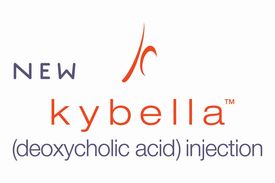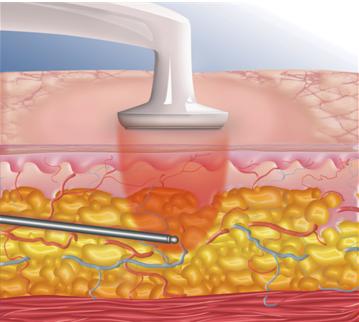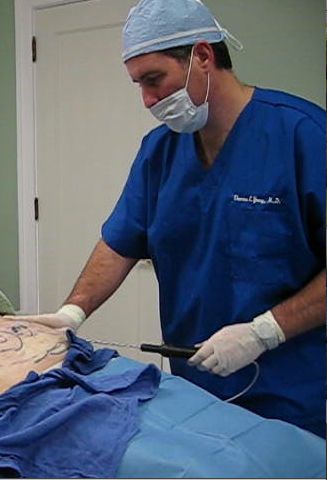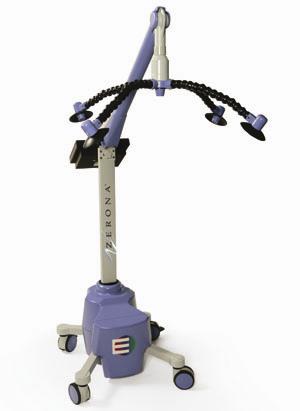Dr. Sanjay Gheyi - Coltishall Cosmetic Clinic Norfolk, England
/Trained as a general surgeon in India, the UK, and the US, Dr. Sanjay Gheyi's Coltishall Clinic in Norfolk runs the gamut of cosmetic offerings from Botox and IPL to cosmetic surgery.
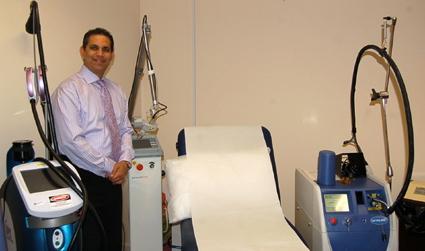 Name: Dr Sanjay Gheyi
Name: Dr Sanjay Gheyi
Clinic: Coltishall Cosmetic Clinic, Norfolk, England
Website: www.coltishallclinic.co.uk
Brief Bio: MBBS and MS general surgery India. FRCS, UK. WOSAAM board certification in Anti-ageing Medicine. Paris France
Medical Director Coltishall Cosmetic Clinic, Norwich UK.
Coltishall Clinic offers a full range of dermatologic laser treatments, non-surgical treatments such as botulinum toxins, fillers, face and body contouring treatments. Laser, skin and vein treatments such as IPL photofacials, non-ablative skin rejuvenation and toning, CO2 laser resurfacing, sclerotherapy, EVLT and ambulatory phlebectomy. We also provide minimally invasive options and cosmetic surgery under pure local anesthesia. This includes microcanula tumescent liposuction, fat transfer, laser assisted liposuction, blepharoplasty and face and neck lifts.
What made you decide to get into Cosmetic Medicine?
I had my board certification in General Surgery and worked in various surgical specialties including plastic surgery. I was always interested in cosmetic surgery but after spending 10+ years in Surgery in India, UK and a brief period as a surgical resident in the USA, I felt that there was more to life then perpetual residency so I decided to opt out of the rat race. I worked part time in general practice and also surgery. Then I discovered lasers and after much trepidation and sleepless nights brought my first device in 2006 and have never looked back. That was the best thing I ever did. I started slow and gradually added more services. I did not market very much but emphasized on training and education. I was working in the NHS at the time and gradually reduced my commitment as my private practice expanded. In 2010 I reduced my NHS commitment to just one session in Dermatologic surgery which I enjoyed immensely. After 5 years I resigned from the NHS completely to focus on my aesthetic practice full time.
What could you tell us about your clinic?
We are located in a beautiful suburban area north of Norwich. I decided to stay away from busy city centre because last thing you want to do after having a CO2 laser resurfacing for example is to be walking through town centre with a red face.
We have 3 treatment rooms, a reception room and separate comfortable waiting room. My wife is the general manager and we have two receptionists and one aesthetician. We have a small team so most patients know us well and we all know them very well. We offer only evidence based, results oriented services and where patients ask for treatments or services where there is not a lot of evidence base I tell them this very clearly.
We offer a full range of cosmetic dermatology services, minimally invasive surgeries such as skin lesion removals, tumescent liposuction, blepharoplasty and SMAS facelifts. We also have a vein practice and offer services for thread and spider veins anywhere on the face and body and also varicose veins treatments of EVLT and ambulatory phlebectomy under tumescent anesthesia.
How have you decided staffing in your practice?
Hiring the right people is very important. I was very lucky that my wife agreed to deal with the phone calls in the early days. She is a nurse so she had considerable health care experience which helped a lot. At first we used our NHS premises and staff on a part time basis but quickly learnt that was not a great idea. It is very hard to mix NHS services [I guess similar to your insurance patients in the USA] with self-funding private patients. So we moved out to private rented premises. We also appointed and trained dedicated staff members who had no NHS experience. We moved again to our new premises in 2010 as we were running out of space very quickly as the practice was expanding. Our new premises are future proof to allow for more expansion. We do not have a formal incentive scheme for staff but they are well looked after and we pay them well. We offer generous discounts on treatments and products and some free treatments. We have formal policies and procedures in place which are updated from time to time. When we hire new staff we allow them an opportunity to come and spend a day with us to see if they feel we are right for them and vice versa. Then we would have them on a trial period before appointment. We allow flexible working and our aesthetician manages her schedule herself. The feedback we get from staff is that this is a happy place to work and what is not to like!
Tell us about the technologies you use.
We started with a Lumenis quantum IPL and I still use it. We are lucky to have a full range of dermatologic lasers. For vascular work on the face we use IPL, PDL and long pulsed Nd-Yag. IPL is very useful for rosacea treatments. For leg veins it is usually sclerotherapy or Nd-Yag.
We also have a full range of pigment and tattoo removal lasers including the q- switched KTP,Nd-Yag and Ruby lasers. For ablative treatments we use CO2 laser and endovenous laser treatment are carried out with a 1470 nm diode laser. For laser assisted liposuction I use 980 nm diodes and also a 1470 nm diode laser.
For skin tightening we use radio-frequency and for skin toning we use q-switched Nd-Yag lasers and also in quasi-synchronous mode.
I like IPL because it is gentle and can address a number of concerns simultaneously. I love the lasers and there is no laser that I dislike. If you know you lasers well, you know their indications and basic science- each has its place in our armamentarium. I do dislike some doctors giving presentations and insisting that it has to be a particular brand of laser to do the job best. Look beyond the hype. If you know the wavelength, pulse duration and fluence you can make your own conclusions. One note of caution though-please don’t transfer recommended settings of one device to another-unless you are practicing on yourself first! Please stick to recommended settings and you can improvise as your experience grows.
Although I like new technology I do not rush in to buy the newest device as it hits the market. I once heard a physician say that he does not try any new drugs on his patients till they have been on the market for three years. Well, in cosmetic medicine we can't be that long but I like to wait at least six months and make sure and the machine that I'm investing my money in works well.
What marketing strategies do you use?
Our practice has been growing slowly and organically over last many years. We deliberately stayed away from aggressive marketing. I see two types of practices opening up. The first is cut- price businesses which turn these procedures into commodities. The second type is the practices that focus on premium services. We belong in the second camp.
Internet marketing has worked well for us and we use SEO and also PPC advertising. I created my own website, however, now due to lack of time I am getting an external website designer to revamp our website and make it mobile friendly. We advertise in local magazines. We don’t do national media or radio advertising.
Increasingly we see patients through word of mouth which is the best form of marketing. We also get referrals from local family doctors and hospital consultant colleagues.
Which procedures or treatments do you perform the most?
Surgical procedures are more profitable but lower volume. Next on the list is Botox and fillers followed by IPL and laser skin rejuvenation treatments. Laser hair removal and tattoo removal has become a commodity as a number of cheap places have opened up. We have however seen patients that are either dissatisfied from these services or had complications and we are seeing an uptick in laser hair and tattoo removal. Our unique selling point is that we have a number of devices so we can optimize the treatment using the best device based on patient’s unique characteristics.
We are moving away from non-invasive fat reduction as they fall short and again a number of cheap places are opening up. I can provide such good results with tumescent liposuction that non-invasive technologies will have to improve a lot before I can be convinced to offer them on a bigger scale.
What are your thoughts about cosmetic medicine, would you perhaps have any stories to tell?
Medical knowledge is obviously important but cosmetic medicine is both science and art, especially if you're going to do facial or body contouring or both.
Choose your patients carefully and learn to say no. Patient expectations are very high and in some cases are completely distorted.
There is inherent variability in response which means that some patients may respond very nicely and others may not respond at all. So don't provide any guarantees. They don't work in medicine!
I saw this clinic opened up locally who started doing laser hair removal and advertised 100% guaranteed laser hair removal. Six months later the guarantee had gone down to 1 year period following your last session and I believe now the guarantee has disappeared. Obviously they must have learnt the hard way!
Complications are a part of life and you will get complications. Be honest and take good care of your patient if you get complications and they will usually be very understanding and forgiving.
What advice could you tell to your fellow physicians?
Education is key. Patient’s come to us for results and a good experience. If you can provide this you will succeed. Fortunately we have many resources available to us. I found the discussions on medical spa MD very useful and they also helped me stay clear of hyped up devices which over promise but fall short on delivering results.
Don't buy the latest cool device. Instead go to devices which have had a proven track record. Talk to your colleagues, visit clinics, attend conferences and keep up-to-date and good luck.
About Dr. Gheyi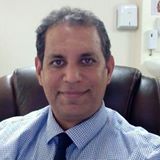
Dr Gheyi has triple board certifications in General Surgery, Family Medicine and Anti-ageing Medicine. He devotes full time to his Aesthetic and Anti-ageing practice. He personally administers thousands of laser, injectable and surgical procedures each year. He worked in NHS hospitals for 21 years in surgical specialties and last 5 years in dermatologic surgery.
He is an invited speaker at laser seminars and mentors other doctors training in lasers and cosmetic dermatology and surgery.
He is a trained and qualified surgeon. He has extensive clinical experience both in the UK and USA and has attended numerous perceptorships in cosmetic medicine & surgery. He has built a premier laser practice with sixteen different state-of-the-art laser and light systems and he continues to invest in training and new technology.

